What is audience segmentation? Strategies and examples to implement
A business that tries to appeal to everyone resonates with no one.
A common pitfall of companies today is to engage in one-size-fits-all marketing—ad copy, website design, social media posts, and other outreach that speaks to anyone who might be interested in their offering. While casting a wide net may seem like the best way to reach prospects, a lack of focus can result in ineffective messaging.
Instead, businesses are better served to segment their audience and message to ensure their content is getting in front of the right people — a concept better known as audience segmentation. Audience segmentation is a method businesses use to hone in on subgroups of their prospects to deliver more personalized messaging. This, in turn, can result in more effective and profitable outreach.
In this article, we will detail the basics of audience segmentation: what it is, how to implement it in your operations, and how Clearbit can be the data partner that powers your segmentation efforts.
What is audience segmentation?
Audience segmentation is a marketing process in which a business breaks down its target market into smaller subgroups. These groups are based on predetermined attributes such as behavior, demographics, industry, location, and more.
For example, let’s look at a fictional company that sells tennis equipment. Their entire market is people who play tennis, but the company could use audience segmentation to focus on the prospects who live in a certain area of the country, follow tennis brands or athletes, are between the ages of 25 and 34, and anything else they deem relevant.
Why is audience segmentation important?
Audience segmentation is important because it allows a business to provide more tailored and effective messaging. Instead of focusing on every single consumer who might be interested in your offering, audience segmentation can narrow down your marketing efforts to focus on your best-fit prospects.
Why is that important? It all lies in the concept of personalization.
Personalization is the act of tailoring messaging to speak to one specific audience. This can manifest in the emails you send to prospects, the messaging in your advertisements, what you post on social media, and even the copy on your website. At Clearbit, for example, our advanced personalization capabilities make it easy for businesses to identify and engage with their most valuable prospects across email, chat, advertisements, landing pages, and more.
When you start personalizing your messaging, you join the ninety-seven percent of marketers who have seen success from this method.
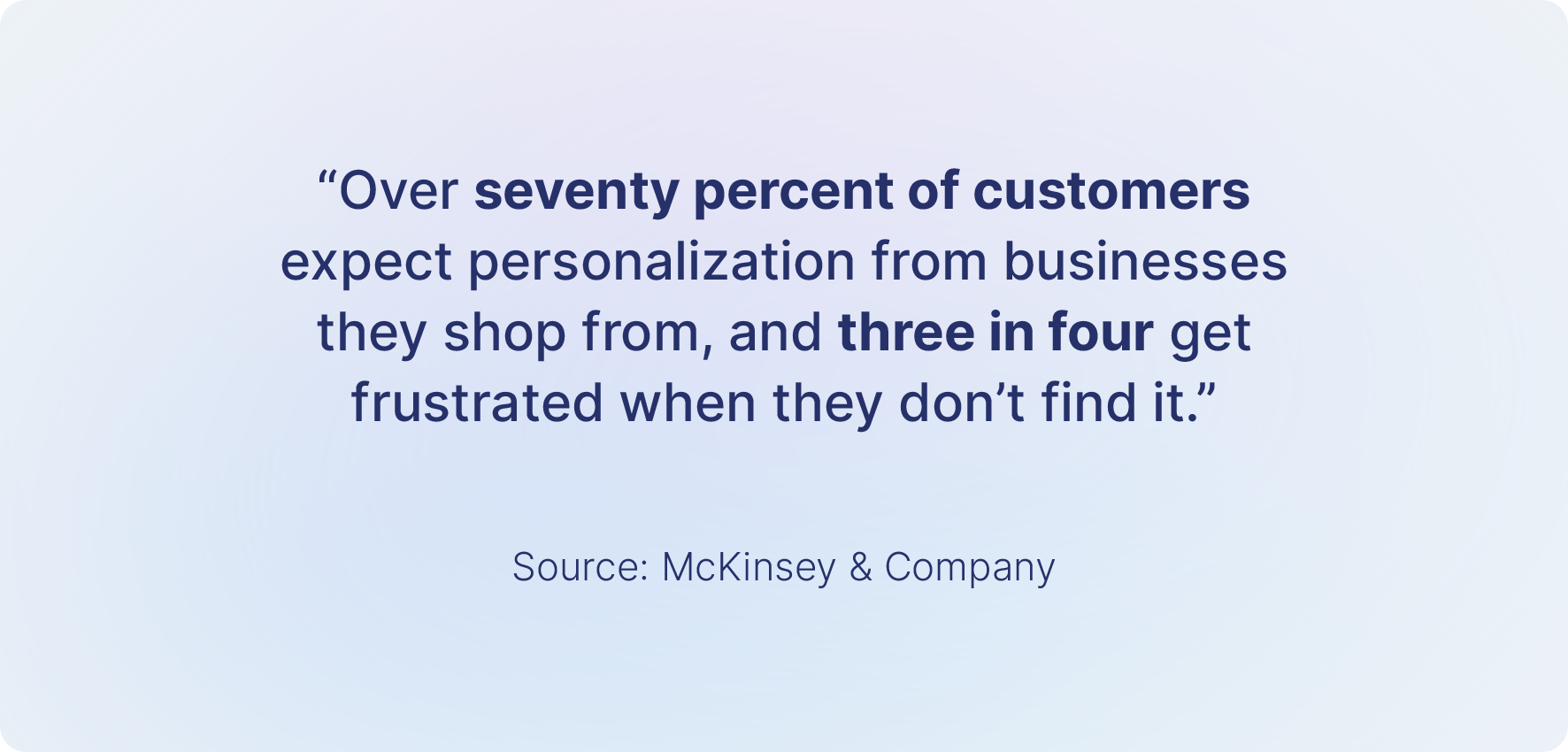
Audience segmentation is crucial for businesses because it helps them better understand their customers, guide go-to-market strategies, and develop new offerings and marketing campaigns.
In the grand scheme of things, audience segmentation influences every aspect of your business.
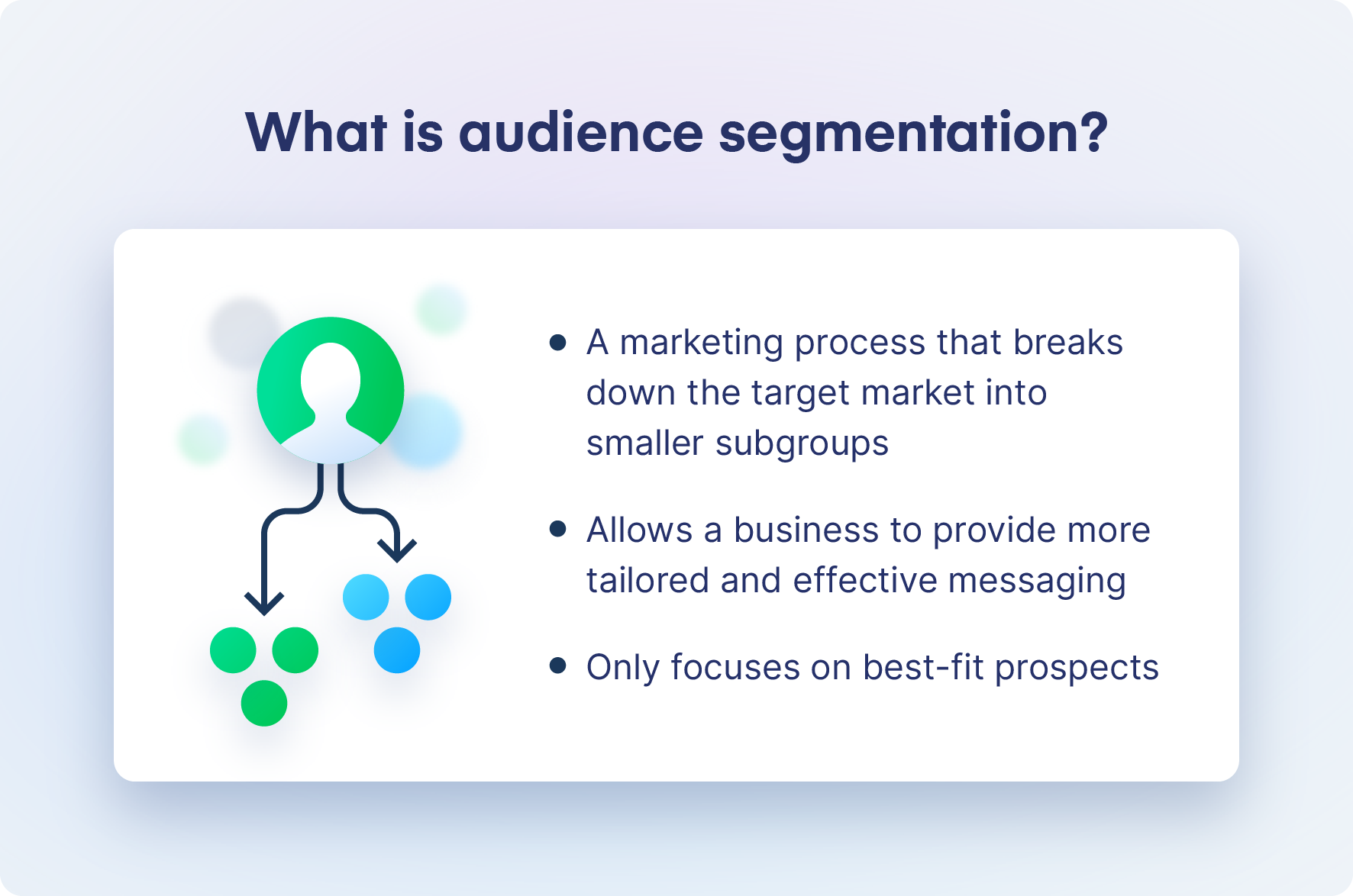
Examples of audience segmentation
The opportunities are endless with audience segmentation. Businesses can group their prospects by any conceivable factor—for example, we offer over 100 attributes to choose from at Clearbit. How you choose to segment your audience is up to you, but below we've listed some of the most common ways to do so.
Behavior
Behavioral segmentation refers to how your prospects interact with your brand—both in the specific actions they take and how often they do so.
There can be different ways to track this metric, but there are typically three behavioral data points to focus on:
- Website activity: How are prospects interacting with your website? The pages they visit and how long they browse can provide valuable insight into what's important for a specific audience.
- Purchase behavior: Prospects purchase differently based on their individual preferences—some may be more prone to make small, consistent purchases, while others may be more likely to make one large purchase. This metric can provide context to pricing and messaging decisions.
- Benefits sought: What are your prospects looking for exactly? Different audience segments will have different product goals, so you'll need to determine what's important to the audience segment you are targeting.
The main flaw with behavioral segmentation is that it doesn’t take into account actions that happen offline, such as word of mouth and other interpersonal interactions. However, if you can get a better understanding of how and why your customers buy, you’ll have a better understanding of how to personalize your messaging.
Demographics
Segmenting an audience based on demographics is typically the easiest way to start, and one of the most popular.
An effective variable to start with is age, then narrow it down further with their annual income, nationality, occupation, relationship status, and more. Doing so can give your messaging an initial dose of personalization from which you can build upon other segmentation criteria.
Department/role
In B2B industries, the department or role of a target market is important to keep in mind when crafting messaging and other outreach strategies.
Who does your product help most? What department are they involved in? If, for example, your offering caters mostly to marketing professionals, you'll want to be sure that your outreach speaks directly to those professionals. This ensures your outreach is as consistent and effective as possible.
Estimated annual revenue
Do you typically cater to a business of a certain size? If so, an important criterion for your outreach may be estimated annual revenue.
For example, businesses that make under $1 million a year will have different priorities and spending power than businesses that make over $1 million per year. Segmenting your audience based on the right type of business for your offering will go a long way in enhancing your messaging.
Industry
Similar to annual revenue, segmenting an audience by industry is an important strategy. Not all businesses will resonate with the same messaging—an ad that speaks to a SaaS company will not be as effective as with a manufacturing company, for example.
Location
Where your prospects are located should greatly influence both the content and timing of your messaging.
Picture a company that sells ice skates. Would it be wise for them to spend a large portion of their advertising budget on prospects who live in Texas? Segmenting your audience based on location can help avoid these pitfalls.
Technology used
The technology a business already uses can tell a lot about whether or not they’d be a good fit for your product. You can segment audiences based on the technology, both specific technology products (Google Analytics, Salesforce, Clearbit, etc.) or the category of technology (productivity, content management systems, customer support, etc.) can help you to better reach your best-fit prospects.
How to use audience segmentation
Now that we've covered why audience segmentation is important, we will dive into a few ways you can benefit from it.
Ads
When businesses engage in generic outreach, they end up spending valuable ad budget to produce low-performing campaigns with suboptimal conversion rates. To combat this, hone in on a specific audience that is most likely to be interested in your offering, and create outreach campaigns that speak directly to them.
An example of audience segmentation in action comes from the Leo Burnett Worldwide ad agency, which designed a campaign for Diamond Coffee.
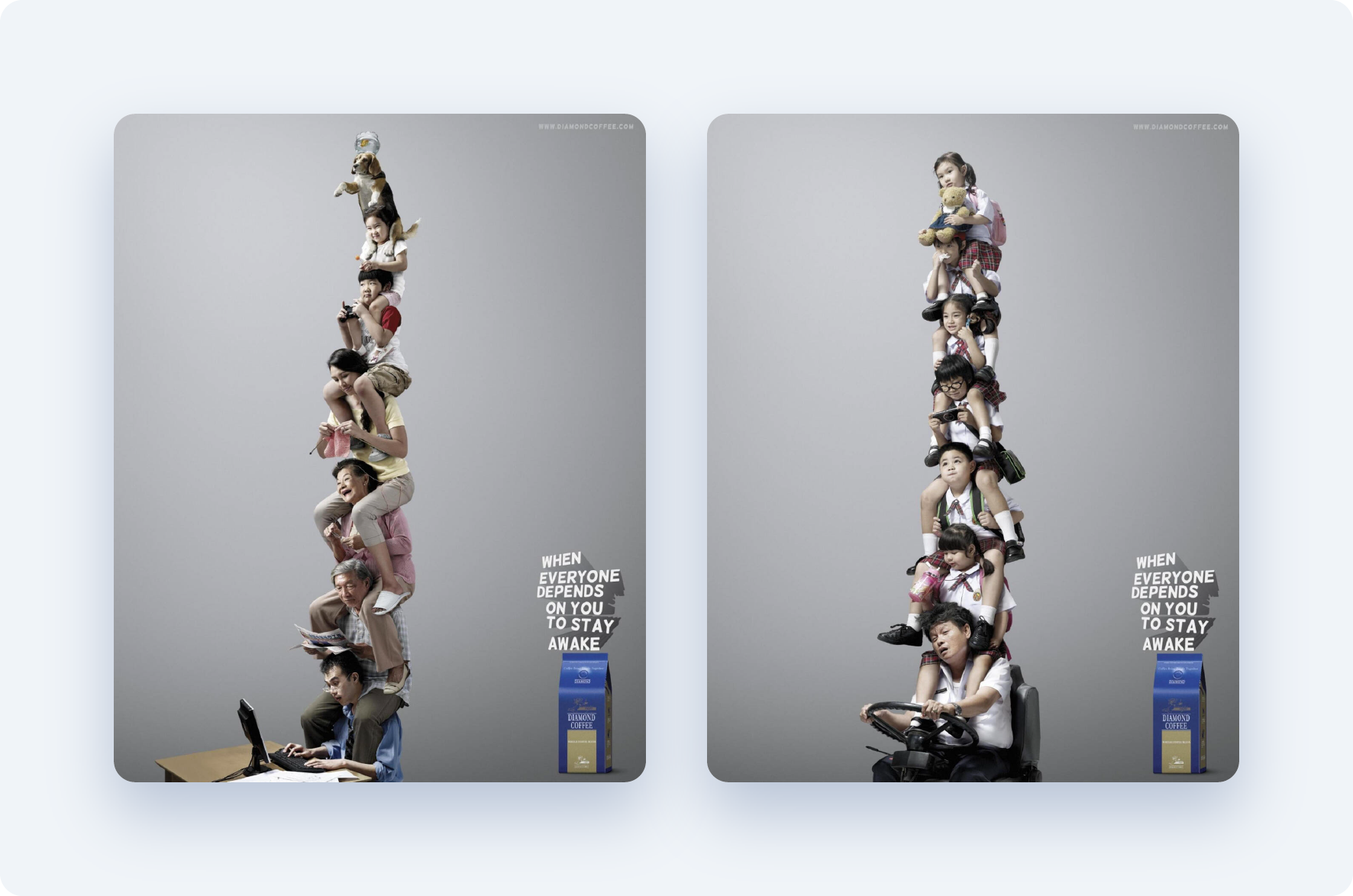
While coffee is a product that can be purchased and enjoyed by almost everyone, this campaign decided to focus on individuals at the head of their households. By speaking directly to these prospects, this ad resonated with them on a level that a general advertisement wouldn’t.
This technique isn’t limited to print ads or other forms of traditional advertising, as the same principles can be applied to PPC ads, social media ads, and any other similar form of outreach.
With audience segmentation and ad targeting, you can create more effective and profitable campaigns that reach the right prospects at the right time.
Personalization
Segmenting your audience is the first step to creating personalized content that resonates with prospects across all of your media and outreach channels. Just as with advertisements, once you narrow down what type of prospect you're talking to, you can craft messaging that catches their attention.
One example of this is customizing key areas of your website:
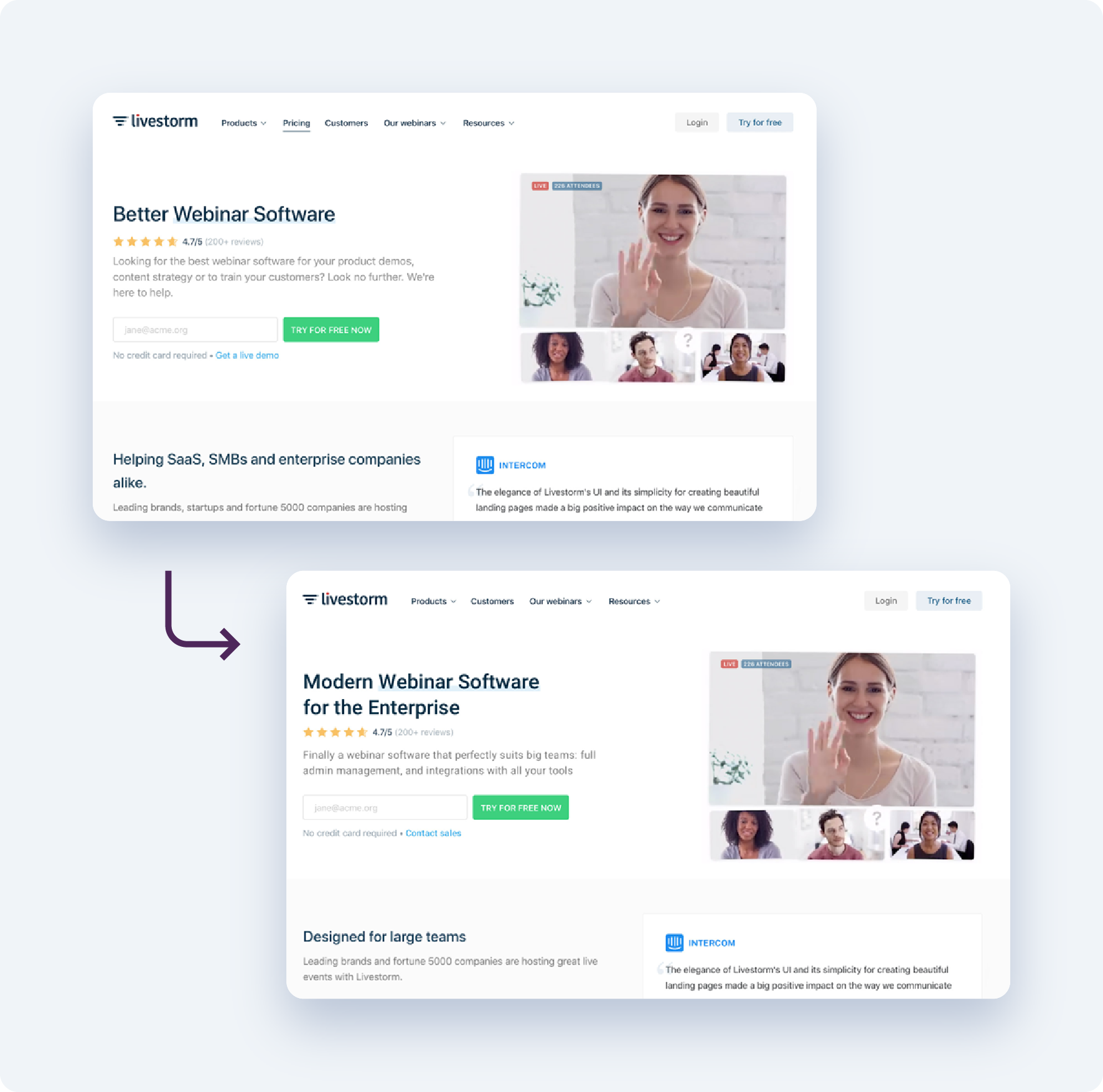
Utilizing our Clearbit Reveal capabilities as well as other personalization software, Livestorm was able to customize its homepage when enterprise-level companies visited and steer those leads directly to sales. In doing so, they were able to triple their enterprise sign-ups and increase their overall deal size.
Personalization can be used anywhere in your business, like email. You can use audience segments to craft email campaigns that speak directly to the prospects. One such example may look like this:
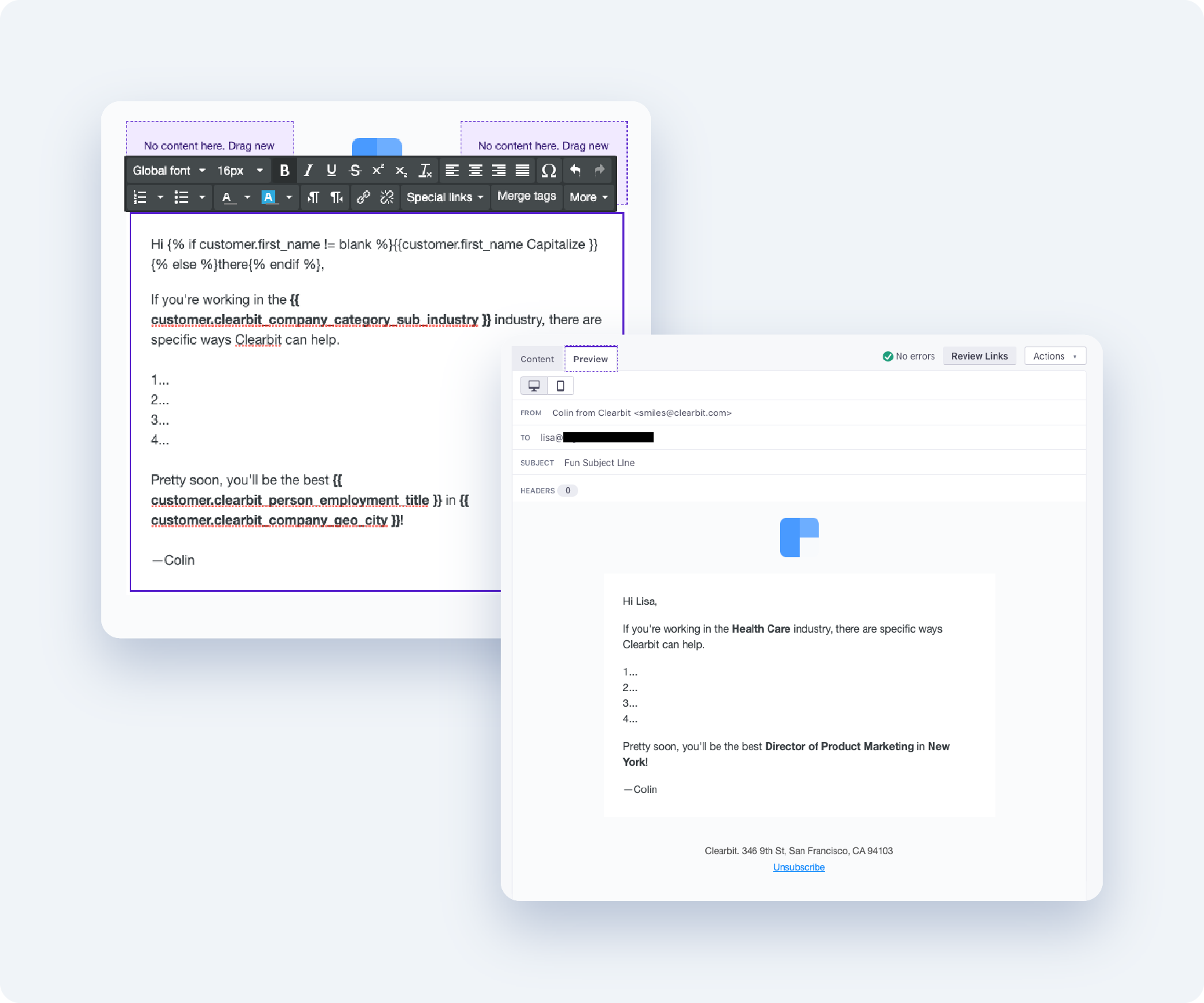
Anywhere you communicate with prospects or customers is an opportunity for personalization—capitalize on it to create more effective messaging.
Lead routing
Lead routing, paired with audience segmentation, can ensure your prospects are moving through the buyer journey in the most effective way possible.
Lead routing is the process of assigning leads to sales reps based on the quality of the lead itself, as well as the availability and expertise of individual salespeople. With segmentation, you can send leads from a specific location, industry, company size, and more to specific sales reps. When utilized effectively, this process can greatly improve conversion rates because you are matching the right prospects with the right salespeople.
As you can imagine, a well-oiled lead routing process can generate an immense amount of new business—but a poor or misguided process can cause more harm than good. The key is audience segmentation.
When your business determines the best-fit prospects based on individual attributes and behavior, you can create an effective system that delivers high-quality leads to your best salespeople every time.
Audience segmentation FAQ
Finally, we will wrap up with a few frequently asked questions about audience segmentation.
What is the meaning of audience segmentation?
Audience segmentation means breaking down a business’s target market into smaller subgroups to ensure their content is getting in front of the right people.
What are examples of audience segments?
A business can have any type of audience segment they deem relevant, but a few examples include prospect behavior, demographics, industry, and location.
What is audience segmentation used for?
Audience segmentation is used to direct messaging and outreach toward a smaller subset of prospects. This makes marketing materials more relevant, and can lead to higher conversion rates.
Clearbit can aid in segmentation goals
Audience segmentation is crucial in providing effective outreach that truly resonates with prospects. That said, your segmentation efforts are only as effective as the data behind them.
At Clearbit, we have the data enrichment, lead scoring, and personalization tools you need to properly segment your audience and deliver them outreach that continuously hits the mark.

